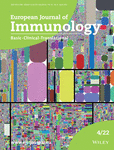Journal list menu
Export Citations
Download PDFs
Cover Picture
Front cover story: Eur. J. Immunol. 4'22
- First Published: 05 April 2022
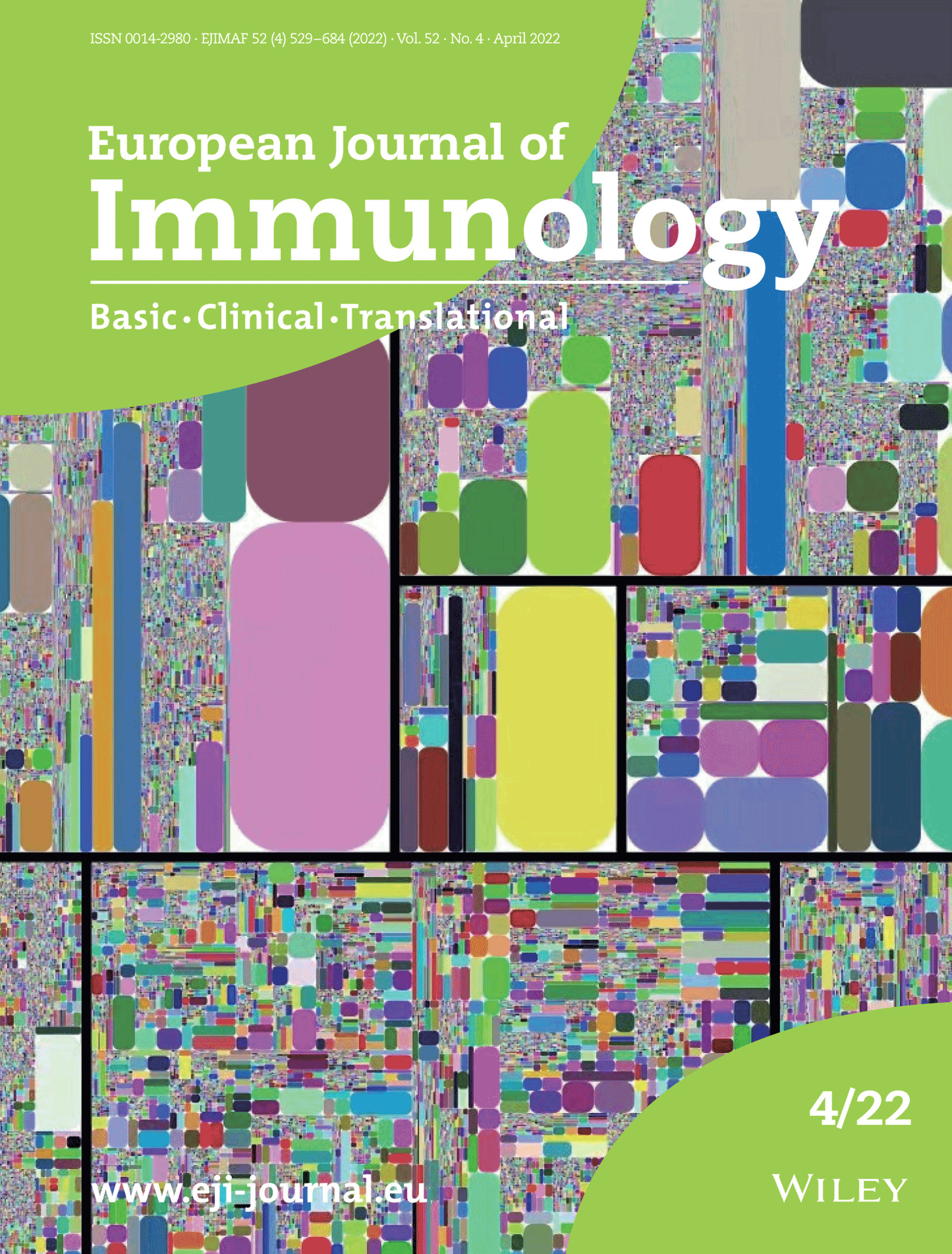
Our colorful front cover features a seven-chain repertoire tree maps representation of a SLE patient sensitive to immunosuppressive treatment. Each square represents a chain, with its size representative of its relative expression out of the seven chains. The tree map should be read from left to right and then from top to bottom: TRA, TRB, TRD, TRG, IGH, IGK, and IGL. Each rectangle color block represents a clone. The image is taken from Wu et al. (pp.669-680), where the authors analyzed the changes of BCR in systemic lupus erythematosus patients in response to immunosuppressive drugs.
Back Cover
Back cover story: Eur. J. Immunol. 4'22
- First Published: 05 April 2022
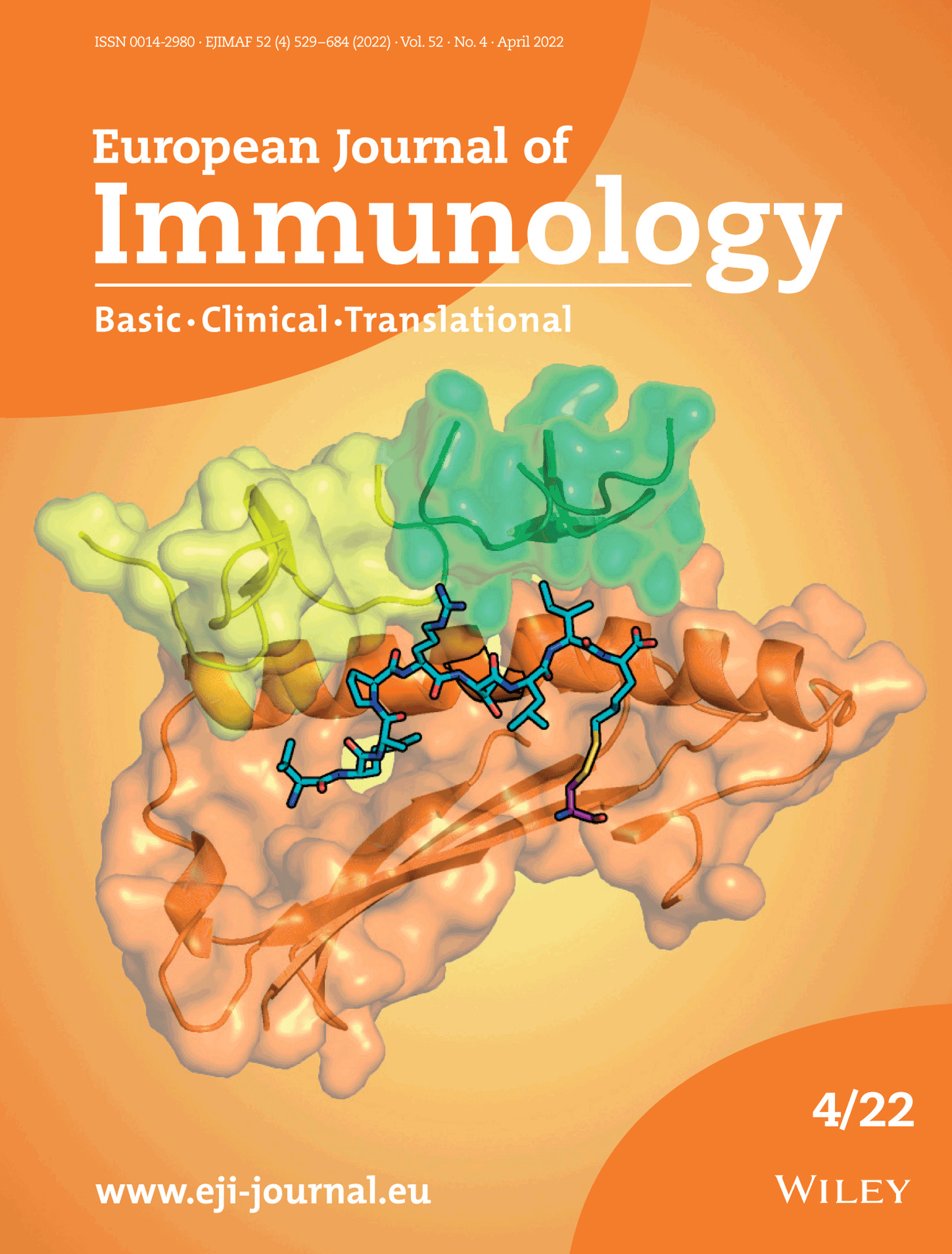
Our back cover image shows a non-natural amino acid (purple sticks) engineered to introduce a disulphide bridge (yellow sticks) to anchor the peptide (cyan sticks) into the HLA-E binding groove (orange cartoon) without altering the interaction with a cognate T cell receptor (green and yellow cartoon). The image is from Barber et al. (pp.618-632), where the authors present a novel approach for stabilizing peptide antigens bound to the non-polymorphic HLA-E binding groove. This enables the generation of stabilised peptide-HLA-E complexes that can be used to isolate and study natural HLA-E-restricted T cells in human disease.
Issue Information
Contents
Forum
Issue Highlights
News & EFIS
2022 International Women's Day - yEFIS highlights outstanding women vaccine researchers
- Pages: 537-540
- First Published: 07 March 2022
Highlights
Review
Basic
Metabolic dynamics instruct CD8+ T-cell differentiation and functions
- Pages: 541-549
- First Published: 06 March 2022
Frontline
Clinical
Stereotyped B-cell responses are linked to IgG constant region polymorphisms in multiple sclerosis
- Pages: 550-565
- First Published: 29 January 2022

We used single-cell RNA-seq to assess the transcriptome and immunoglobulin heavy- and light-chain repertoires of cerebrospinal fluid B cells in MS. Patients carrying the G1m1 allotype displayed a stereotyped B-cell response utilizing the IGHV4 and IGKV1 gene families. This may indicate that the B cells are targeting similar epitopes across different patients.
Adaptive immunity
Research Articles
Basic
A population of naive-like CD4+ T cells stably polarized to the TH1 lineage
- Pages: 566-581
- First Published: 28 January 2022
Global koff-rates of polyclonal T-cell populations merge subclonal avidities and predict functionality
- Pages: 582-596
- First Published: 31 January 2022
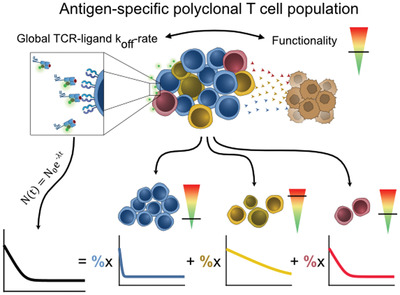
Little is known about polyclonal T-cell populations’ TCR-ligand avidity and how it relates to functionality. We assess TCR-ligand koff-rates ex vivo and establish a positive correlation with functional parameters. Defined polyclonal populations from monoclonal T cells reveal predictability of global koff-rates, informing the design of T-cell products.
Molecular immunology and signaling
Research Articles
Basic
Initial properdin binding contributes to alternative pathway activation at the surface of viable and necrotic cells
- Pages: 597-608
- First Published: 29 January 2022
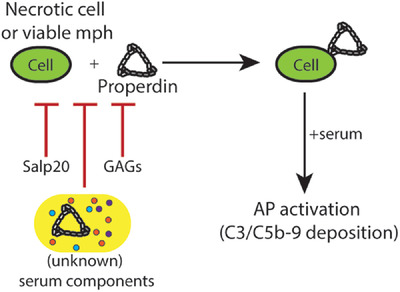
Properdin binds to various necrotic cells as well as viable macrophages (mph), which seems a prerequisite for alternative pathway (AP) activation at the surface of these cells. Various factors, including the tick protein Salp20, (unknown) serum components and glycosaminoglycans (GAGs) are able to prevent properdin binding to these cell surfaces.
Novel approach to monitor intravenous immunoglobulin pharmacokinetics in humans using polymorphic determinants in IgG1 constant domains
- Pages: 609-617
- First Published: 02 December 2021
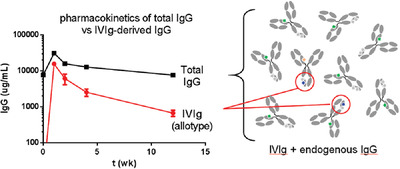
Clinical efficacy of intravenous immunoglobulin treatment (IVIg) is related to its pharmacokinetic profile, which cannot easily be monitored specifically. We developed assays to specifically monitor the pharmacokinetics of IVIg using polymorphic determinants of IgG1, which allows discrimination between endogenous IgG and therapeutic polyclonal IgG.
Structure-guided stabilization of pathogen-derived peptide-HLA-E complexes using non-natural amino acids conserves native TCR recognition
- Pages: 618-632
- First Published: 02 February 2022
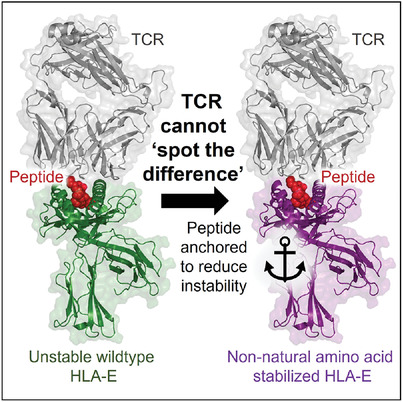
We show a peptide can be modified using non-natural amino acids to anchor into the HLA-E binding groove whilst maintaining native interactions with TCR. This enables the generation of stabilised peptide-HLA-E complexes that can be used to isolate and study natural HLA-E-restricted T cells in human disease.
Immunity to infection
Research Articles
Clinical
Soluble CD137 is a novel serum marker of liver cirrhosis in patients with hepatitis C and alcohol-associated disease etiology
- Pages: 633-645
- First Published: 16 December 2021
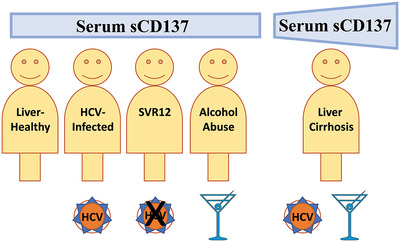
Soluble CD137 (sCD137) regulates T-cell functions, which are disturbed in HCV infection. Serum levels of sCD137 are similar in healthy controls, HCV-infected patients, patients with sustained virological response (SVR) after therapy with direct-acting antivirals and patients with alcohol abuse. sCD137 is induced in patients with liver cirrhosis.
Research Article
Clinical
SARS-CoV-2 infection activates dendritic cells via cytosolic receptors rather than extracellular TLRs
- Pages: 646-655
- First Published: 31 January 2022

Neither TLR4-expressing dendritic cells nor cell lines become activated by SARS-CoV-2. Notably, ectopic expression of ACE2 on dendritic cells leads to infection by SARS-CoV-2 and immune activation. Thus, SARS-CoV-2 triggers intracellular but not extracellular pattern recognition receptors, suggesting that immune responses are initiated upon direct infection or due to bystander inflammatory processes.
Immunodeficiencies and autoimmunity
Research Articles
Basic
B-cell modulation with anti-CD79b antibodies ameliorates experimental autoimmune encephalitis in mice
- Pages: 656-668
- First Published: 28 December 2021
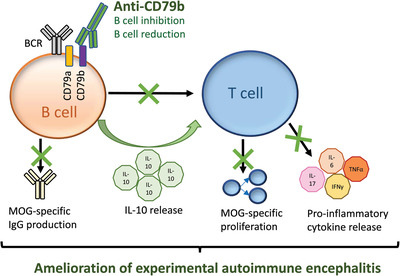
B cell modulation with anti-CD79b has multiple downstream effects including less cerebral leukocyte infiltration, changed cytokine release, lower MOG-specific antibodies and lower MOG-specific T cell proliferation. All of these effects contribute to amelioration of experimental autoimmune encephalitis.
Research Article
Clinical
Systemic lupus erythematosus patients contain B-cell receptor repertoires sensitive to immunosuppressive drugs
- Pages: 669-680
- First Published: 29 January 2022
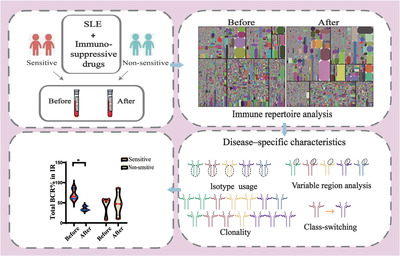
Changes of BCR in systemic lupus erythematosus patients in response to immunosuppressive drugs were identified in ten SLE patients. Overall changes, including isotype usage, variable region analysis, clonality,class-switching, etc. might help to estimate the patient's response to immunosuppressants and to manage disease.




